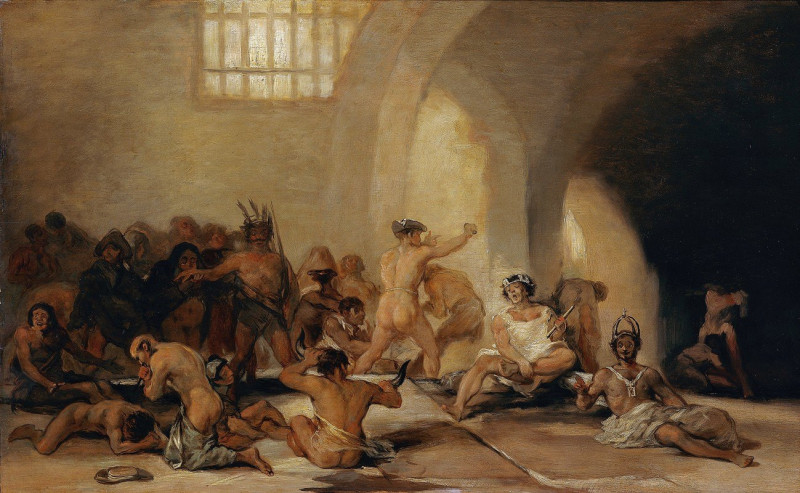The Sabbath of witches (1797-98)
Technique: Giclée quality print
Recommended by our customers
More about this artwork
At the turn of the 19th century, Francisco de Goya, a profound Spanish romantic painter, ventured into the realms of the supernatural with his compelling work, "The Sabbath of Witches" (1797-98). This painting is a striking representation of the dark and mystical themes that frequented Goya's art, particularly in his later years.In this vivid depiction, Goya portrays a nocturnal gathering under a crescent moon, where witches pay homage to an imposing goat-like figure adorned with a wreath, representing a sabbath or a meeting of witches. The creature, often interpreted as the Devil or a pagan deity, sits centrally, dominating the composition with an almost regal posture as it receives the adulation of its surrounding devotees.The figures surrounding this central beast are a mix of fervor and desperation, painted with a raw intensity that was characteristic of Goya's style. These women, draped in loosely flowing garments, engage in what seems like a mix of worship and pleading, their faces contorted in expressions ranging from ecstasy to fear. This juxtaposition of delight and dread encapsulates the complex human emotions towards the supernatural.The ominous, darkened landscape with distant, muted rock formations creates a stark contrast with the pale, almost ethereal light shining on the central figures, enhancing the surreal and chilling atmosphere of the scene."The Sabbath of Witches" is a powerful exploration of superstition and the supernatural, themes that resonate through centuries and continue to fascinate and horrify. As we gaze upon Goya's masterful strokes, we are drawn into a world of ancient rites and primal fears, where the boundaries of reality are blurred by the mysteries of the night.
Delivery
Returns
Francisco José de Goya y Lucientes (30 March 1746 – 16 April 1828) was a Spanish romantic painter and printmaker. He is considered the most important Spanish artist of the late 18th and early 19th centuries. His paintings, drawings, and engravings reflected contemporary historical upheavals and influenced important 19th- and 20th-century painters. Goya is often referred to as the last of the Old Masters and the first of the moderns.















































